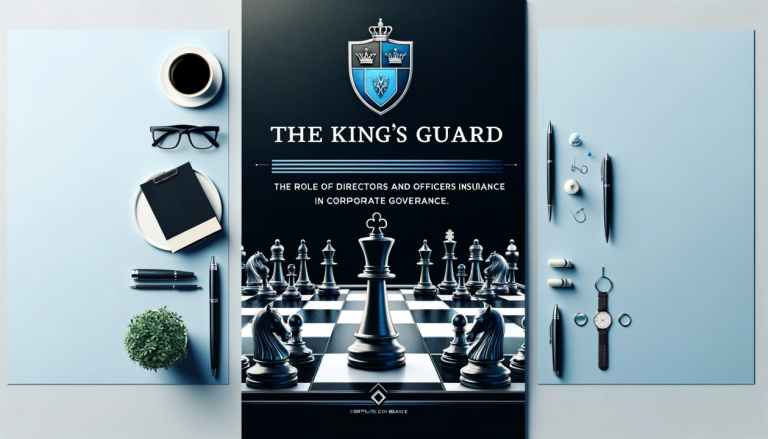D&O Insurance for Private Companies
Private companies (those not listed on public stock exchanges) include startups, family-owned businesses, mid-sized enterprises, and firms backed by private equity or venture capital. These companies typically have a smaller, more concentrated group of owners (founders, investors, etc.) and do not have publicly traded stock. However, that doesn’t mean their directors and officers are safe from lawsuits – private firms can and do get sued frequently. The types of claims private company directors might face include:
- Investor and Shareholder Lawsuits: Even if a company isn’t public, it may have minority shareholders or venture investors who can sue the management. For instance, if a startup’s major project fails, an investor might claim the CEO misrepresented the product or mismanaged funds. Likewise, disputes between co-founders or with minority stakeholders often lead to allegations of breach of fiduciary duty or misrepresentation. D&O insurance for private companies is designed to cover these kinds of internal disputes and investor-driven claims.
- Claims by Customers, Partners, or Competitors: Private businesses often deal closely with customers and commercial partners. If something goes awry – say a big client accuses the company’s leadership of breaking a contract or a competitor alleges a director improperly poached a business opportunity – the directors/officers can be named in a lawsuit. Private company D&O policies typically offer broad coverage that can include such third-party claims against management. In fact, statistics show that private firms frequently face claims from vendors, creditors, and competitors, not just from investors.
- Employment-Related Suits: In a private company, a lawsuit from an employee (e.g. alleging discrimination, harassment, or wrongful termination by management) can sometimes trigger the D&O policy, especially if the suit names an executive or board member. Many private company D&O policies either include some Employment Practices Liability coverage or work in tandem with a separate EPLI policy. Private firms often appreciate that D&O insurance can form part of a comprehensive management liability package to cover various claims that a smaller business might encounter.
- Cost and Coverage Structure: D&O insurance for private companies is generally more affordable and flexible than public company D&O. Insurers often offer packaged policies that combine D&O with coverage for employment practices and fiduciary liability, tailored to smaller enterprises. The coverage can be quite extensive (covering the company entity itself in many cases, in addition to the individuals). Private D&O policies also usually have fewer exclusions around securities claims, since private firms don’t issue public stock. However, as a company grows and takes on more investors, the limits might need to increase and certain exclusions (like for any future public offering) might apply.
D&O Insurance for Public Companies
Public companies are those whose shares are traded on stock exchanges, meaning they have a broad base of shareholders and are subject to strict regulatory oversight (such as SEC regulations in the United States). Because of this, the exposure for directors and officers in a public company is often higher and different in nature:
- Shareholder Class Actions: One of the biggest D&O risks for public companies is a shareholder lawsuit following a stock price drop or a negative event. If a public company misses earnings forecasts, has some scandal, or an acquisition goes poorly, it’s common to see lawsuits filed on behalf of shareholders claiming the officers or board misled investors or failed in their duties. These class-action lawsuits can be extremely costly (potentially tens of millions in settlements) and target the CEO, CFO, and board members. Public company D&O insurance is heavily focused on covering these securities lawsuits, which are a unique risk of being publicly traded. In fact, public D&O policies have a specific insuring agreement (Side C coverage) that protects the company itself for securities claims, because the company often gets sued alongside the directors in such cases.
- Regulatory Investigations and Suits: Public companies must comply with a myriad of laws and reporting requirements. If regulators like the Securities and Exchange Commission (SEC) or other government bodies believe the company or its executives violated rules (for example, giving false financial statements, insider trading, or inadequate disclosures), they can pursue actions against the individual directors/officers. Defending against regulatory actions or investigations is a key aspect covered by D&O insurance. For instance, if the SEC investigates the CFO for possible financial misrepresentation, the D&O policy can cover the legal defense costs. Public D&O policies are typically structured to handle these high-stakes regulatory claims, which might be less common for private firms.
- Higher Policy Limits and Multiple Layers: Given the larger lawsuit exposure, public companies often purchase much higher limits of D&O insurance than private firms. It’s not unusual for a midsize public company to have $10 million, $20 million, or far more in D&O coverage, often arranged in layers with multiple insurance carriers (a primary insurer and several excess insurers). The premiums are correspondingly higher as well. Public D&O insurance is usually more expensive on a per-dollar-of-coverage basis, reflecting the greater risk of shareholder litigation. Also, public company D&O policies tend to have larger deductibles (retentions), especially for securities claims. For example, a policy might require the company to pay the first few million of a securities lawsuit before insurance kicks in – this is to ensure the company handles minor suits and insurance is there for truly major events.
- More Exclusions and Terms: Public company policies may include specific exclusions or terms relevant to the public context. One example is the “insured vs. insured” exclusion, typically present in all D&O policies, which prevents coverage for lawsuits where members of the organization sue each other (though there are exceptions). In a public setting, this is less of an issue, whereas in a private company, sometimes that clause is softened to allow coverage for certain shareholder derivative suits. Additionally, when a company is about to go public (IPO), insurers often exclude claims related to that IPO unless an extension is purchased. Public companies must be very mindful of how their D&O coverage is structured at key moments like IPOs, mergers, or acquisitions, to ensure there are no gaps (often they’ll get “run-off” coverage for the old private entity and a new policy for the public entity).
Key differences at a glance
In summary, private company D&O insurance tends to cover a broader range of potential claims (since private firms can have varied claim sources) and is tailored to smaller groups of insureds, often at a lower cost. Public company D&O is laser-focused on securities and shareholder litigation and protecting against the intense regulatory environment, usually at higher cost and with more complex structuring. Both types typically provide coverage for the individual directors and officers (Sides A and B coverage) and can cover the organization in certain claims, but the triggers and emphasis differ.
Transitioning from private to public
It’s worth noting for a company planning to go public (for example, via an IPO) – the D&O insurance strategy will need to shift. Often, a company will purchase a “public D&O” policy effective on the IPO date to cover the new risks, and also arrange a “run-off” (extended reporting) for the old private D&O policy to cover any claims that arise post-IPO related to the period when the company was private. This ensures continuous protection for past and present directors during the changeover.
In conclusion, both private and public companies absolutely need D&O insurance, but the coverage is not one-size-fits-all. Private companies benefit from D&O protection just as much as public companies do – they face lawsuits and legal challenges that can cripple the business or its leaders personally. Public companies, with greater visibility and regulatory obligations, face a higher volume of sophisticated claims and thus invest heavily in D&O coverage.
Whether private or public, the goal is the same: to allow the people running the company to do so without the constant fear that their personal livelihood will be destroyed by a lawsuit. By understanding the differences and securing the right type of policy, companies can ensure their leadership has robust protection tailored to their situation.






































































































